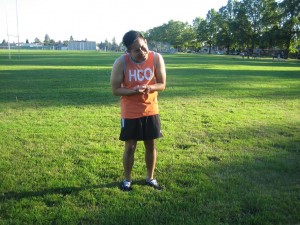An avulsion fracture occurs once a tendon or ligament attached to the bone pulls away from the bone and tears off a piece of bone along with it. If an individual has an avulsion fracture, it is important to consult a doctor so that the extent of damage can be determined as well as provide the appropriate treatment plan to prevent further injury.
What are the symptoms of an avulsion fracture?
The doctor will perform a physical examination and discuss the symptoms. The symptoms of an avulsion fracture typically include tenderness, pain and swelling. The affected area often becomes weak and the individual will eventually lose normal range of motion.
If an avulsion fracture is left untreated or simply ignored, the individual might lose stability in the affected area and he/she might start to feel as if it will give out.

Diagnosing an avulsion fracture
The doctor typically utilizes conventional X-ray in order to confirm an avulsion fracture. Aside from an X-ray, the doctor will order an MRI (magnetic resonance imaging) in order to determine the extent of damage to the tendons and ligaments involving the use of high resolution imaging as well as revealing the location of the avulsion and its size. Once an avulsion fracture is confirmed, it must be given appropriate first aid care and treatment to hasten the healing process.
Treatment for avulsion fracture
An individual with an avulsion fracture must be assessed by the doctor first to determine the severity of the injury sustained. The following measures can be used to help alleviate the pain and inflammation as well as promote the healing process.
Rest
The treatment for an avulsion fracture typically includes rest. Take note that the condition can heal on its own within 4-6 weeks of rest. You can also apply an ice pack to the injured area for 20 minutes every few hours to minimize the pain and inflammation. The doctor will also prescribe anti-inflammatory medications. Depending on where the fracture is located, he/she would require crutches in order to allow the area to rest.
Application of cast
In some cases, the injured area can be casted to help stabilize the affected area in order to promote healing and prevent further injury. The individual might need a cast, walking boot or splint depending on the severity of the fracture.
Physical therapy
An individual who is suspected with an avulsion fracture would require physical therapy for about 3-6 weeks in order to improve the range of motion and strength. Rehabilitation is the main treatment or can be used along with other treatment options such as casting or surgery. The individual should consult the doctor so that an ideal program can be tailored to his/her preferences.
Surgery
In case the bone fragments tears away from the site or if there is severe damage to the tendon or ligament, surgery is required to repair the area or reattach it to the bone. If a child sustains an avulsion fracture on the growth plate, he/she would have to undergo surgery to help reduce potential complications from developing later on as well as prevent chronic pain and inflammation.
